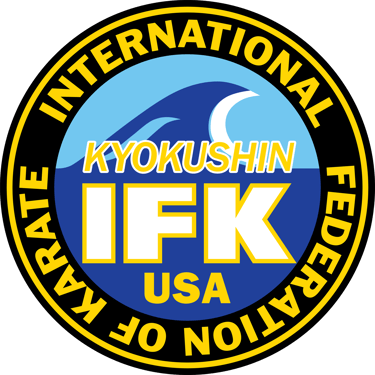Kyokushin Kata (極真型)
Kata (型) means "form" or "shape." The kanji consists of three characters:
形 (Katachi) – Shape
刈 (Kai) – Cut
土 (Tsuchi) – Earth or soil
Literally, kata means “a shape that cuts into the earth.”
A kata is a pre-arranged sequence of movements, blocks, strikes, and transitions, performed from various stances and directions. Each kata emphasizes rhythm, focus, and flow, serving as a living library of traditional techniques. Through kata, students develop balance, coordination, breathing, timing, and mental concentration.
Kyokushin kata training emphasizes two key concepts:
Renma (錬磨): constant polishing
Mushin (無心): no mind
With dedicated practice, a kata becomes internalized, no longer a memorized routine, but a natural expression of movement and intent.
Kata as a Path
Mas Oyama compared kata to language:
“Think of karate as a language: Kihon (basics) are the letters, Kata are the words and sentences, and Kumite (sparring) is the conversation.”
He believed it was better to deeply master one kata than to half-learn many. He also emphasized three key principles:
Waza no Kankyū (技の緩急): Variations in speed and rhythm
Chikara no Kyōjaku (力の強弱): Balance between tension and relaxation
Iki no Chōsei (息の調整): Controlled breathing (Kiai, Ibuki, or Nogare)
Kata is more than technical — it connects us to the traditions and spirit of Budo Karate.
Origins of Kyokushin Kata
Kyokushin kata are traditionally grouped into two categories:
Northern Kata
Derived from Shuri-te via Gichin Funakoshi’s Shotokan style, influenced by northern Chinese kempo, and known for long-range techniques and linear movements.
Examples:
Taikyoku Sono Ichi, Ni, San
Pinan Sono Ichi–Go
Tsuki no Kata
Yansu
Kanku Dai
Sushiho
Southern Kata
Rooted in Naha-te, transmitted through Nei-Chu So and Gogen Yamaguchi’s Goju-Ryu lineage. These katas feature tighter, circular techniques reflecting southern Chinese kempo.
Examples:
Sanchin no Kata
Gekisai Dai and Sho
Tensho
Saiha
Seienchin
Garyu
Seipai
Kata Descriptions & Meanings
Here are brief meanings of Kyokushin’s core kata:
Taikyoku (太極): “Grand ultimate.” Symbolizes the beginner’s mind — broad, open, and without bias.
Pinan (平安): “Peaceful and safe.” Kata that cultivate calmness and mental clarity.
Sanchin (三戦): “Three Battles.” Focuses on unifying mind, body, and spirit through isometric tension and breathing.
Gekisai Dai / Sho (撃塞): “Demolish Fortress.” Emphasizes strength through fluidity and the ability to break through obstacles.
Yansu (安三): “Keep Pure.” Combines powerful techniques with a focus on preserving one’s principles.
Tsuki no Kata (突きの型): “Punch Kata.” Repeated straight punches develop strength, timing, and spirit.
Tensho (転掌): “Revolving Palms.” Soft, flowing movements; the yin counterpart to Sanchin. Oyama considered it one of the most essential kata.
Saiha (最破): “Ultimate Smash.” Represents resilience and the ability to break through adversity — symbolized by the wave in the IFK logo.
Kanku Dai (観空大): “View the Sky.” Kata begins with a symbolic gesture of gazing at the heavens — conveying clarity, renewal, and infinite possibility.
Seienchin (征遠鎮): “Subdue the Distant Rebel.” Long and low kata that builds endurance and tests perseverance.
Sushiho (五十四歩): “54 Steps.” Advanced kata emphasizing rapid, precise movements.
Garyu (臥竜): “Reclining Dragon.” Symbolizes humility and quiet strength — power held in reserve.
Seipai (十八): “18 Hands.” Based on the Buddhist concept of 6 (senses) x 3 (conditions). Integrates subtle movements with explosive power.
TRAINING
Join us for workshops and seminars conducted by skilled professionals and experienced educators from across the United States and internationally. USA-IFK prides itself on its no-politics approach. Click the appropriate button above for more information.
© 2025. All rights reserved.
